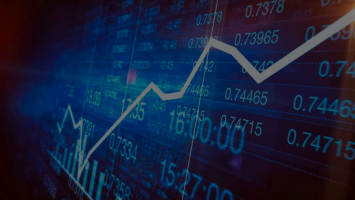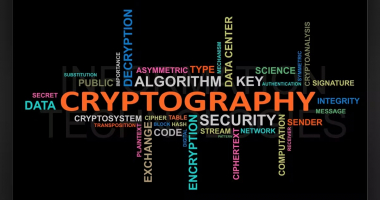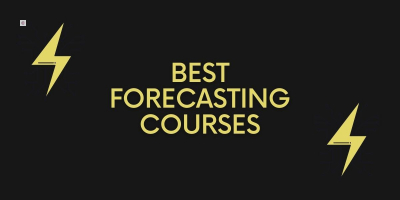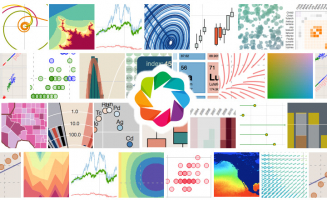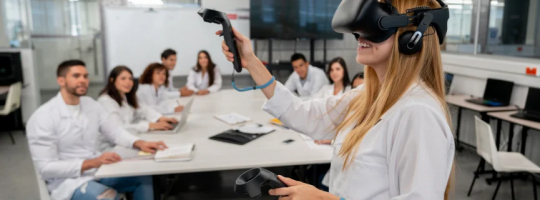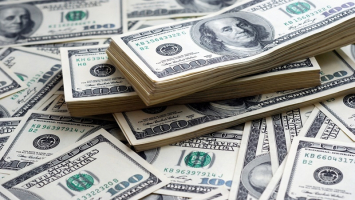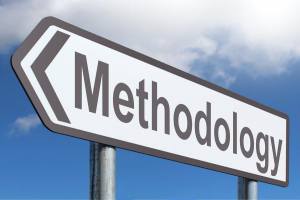Top 10 Best Online Economics Courses
Economics is part science, part art but still 100% essential. Every aspect of our lives is touched by economics and its even more true for the business world. ... read more...Having a basic understanding of economies is necessary to lead any business vertical or team and there really is no alternative. This is why economics is taught even at the school level so that everyone at least has a functional understanding of it. However, if your role requires you to dive a bit deeper into the murky world of economic theory, then check this list top 10 best online economics courses.
-
Economics of Money and Banking ranks first in the list of the best online economics courses. The institutions that form the current monetary system have seen extraordinary evolution during the previous three or four decades. The financial crisis of 2007-2009 served as a wake-up call that they require a similar evolution in the analytical apparatus and theories they employ to comprehend that system. This course, produced and supported by the Institute for New Economic Thinking, attempts to start the process of new economic thinking by resurrecting and updating some neglected traditions in monetary philosophy that have become freshly relevant.
Three aspects of the new system are crucial. Most importantly, the fusion of formerly distinct capital and money markets has resulted in a system with new dynamics as well as new vulnerabilities. The financial crisis exposed those flaws for all to see. The result was two years of desperate experimentation by central banking authorities as they attempted this and then that to halt the collapse. Second, the global nature of the crisis has highlighted the global nature of the system, which is novel in postwar history but not novel in a longer time perspective. Central bank cooperation was critical to preventing the collapse, and the nuances of such cooperation hint at the contours of a new international monetary order forming.
Third, the operation of crucial derivative contracts, most notably credit default swaps and foreign exchange swaps, was absolutely central to the crisis. Modern money cannot be comprehended apart from contemporary finance, and modern monetary theory cannot be built apart from modern financial theory. That is why this course positions dealers in both capital and money markets at the center of the narrative, as profit-seeking suppliers of market liquidity to the new market-based credit system.
Time to Complete: 33 hours
Format: Self-paced, fully online
Google rating: 4.9/5.0
Enroll here: coursera.org/learn/money-banking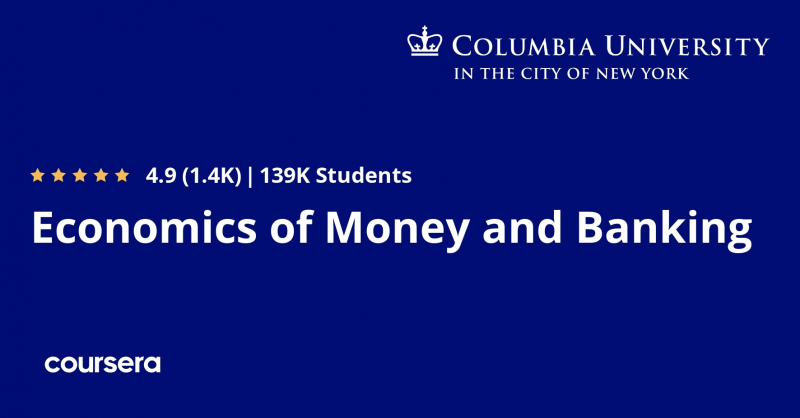
coursera.org -
The program includes six learning sessions that focus on distinct aspects of the circular economy, such as Introduction to Sustainability, Building a Sustainable Organization, Driving Innovation via Impactful Solutions, and others. Throughout the classes, you'll learn through high-quality video lectures, live webinars with Cambridge Judge experts, and practice assignments. After completing the program, you will be able to explain the characteristics of sustainable finance as well as learn how to measure the impact of investments.
This Specialization seeks to make economic ideas understandable to all learners and to educate them how to assess current events using the economics toolbox. It starts by describing the basic macroeconomic factors and how governments can/should utilize fiscal and monetary policy to influence growth, inflation, and employment. It then moves on to the international arena, where countries interact, explaining the fundamental principles of free trade, exchange rates, the balance of payments, and immigration, as well as how these interactions affect their daily lives. Finally, learners will apply these tools and concepts to the world's leading economies and discover how they can "read" important lessons about the risks and opportunities of doing business in these countries from economic data, providing them with tools to use in the workplace and even in personal investment decisions.
A capstone project is located at the end of each MOOC. You will have the opportunity to put all you learnt during the course into practice. You must examine the best economic indicators for a given country and produce a summary of that country's best economic policy trends and milestones. In addition, you must link the macroeconomic indicators to the policies taken by governments in each case and determine whether or not the policy was appropriate. Finally, you will explain your findings and underline the potential implications of failing to execute the appropriate policy.
What you will gain:
- Understanding economic policy-making
- Trade, Immigration and Exchange Rates in a Globalized World
Time to Complete: About 40 hours
Format: Self-paced, fully online
Google rating: 4.8/5.0
Enroll here: coursera.org/specializations/globalization-economic-growth-and-stability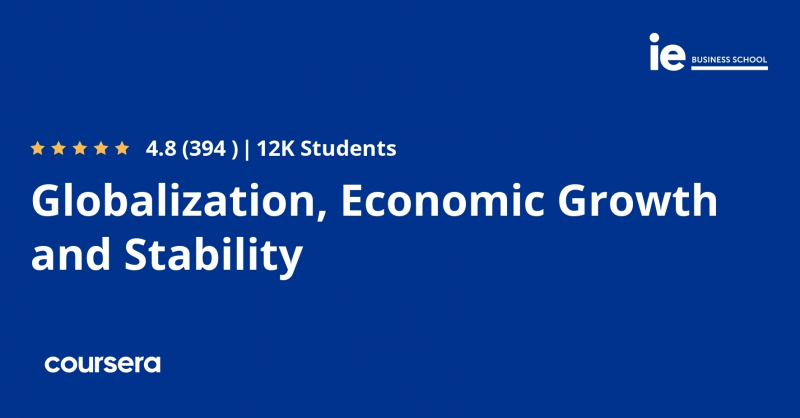
coursera.org -
Managerial Economics and Business Analysis ranks 3rd in the list of the best online economics courses. Managers and leaders must grasp the market features and economic environment in which they operate in order to properly manage and operate a business. With real-world examples, you will gain a strong understanding of market operation and the macroeconomic environment in this specialization. You will be able to identify company and country-level economic factors that influence business decisions, create an analytical framework utilizing statistical methods, and use economic theory and data to analyze the business environment and trends in order to make effective business decisions. The capstone project entails an in-depth investigation of a real-world business situation in which you will investigate a company's worldwide economic environment.
The final assignment will be a business plan that analyzes the microeconomic and macroeconomic environment in which the focal company operates using statistical methods and economic theory. This specialization is part of Gies College of Business' online degree suite, which also includes the iMBA and iMSM. Learn more about acceptance to these programs and how your Coursera work can be used to a degree program here.
What you will gain:- Analyze macroeconomic and microeconomic variables at the firm and country levels.
- Assess market characteristics and firm level behaviors as frameworks for making business decisions.
- Explore asymmetries and externalities as forms of market failure and as best practices for equilibrium outcomes within market structures.
- Create a business plan that requires the application of data analysis tools and interpretations of statistical findings.
Time to Complete: 7 months
Format: Self-paced, fully online
Google rating: 4.7/5.0
Enroll here: coursera.org/specializations/managerial-economics-business-analysis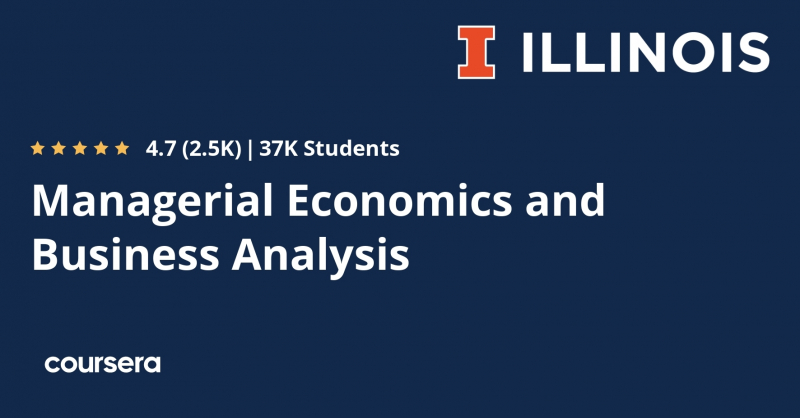
coursera.org 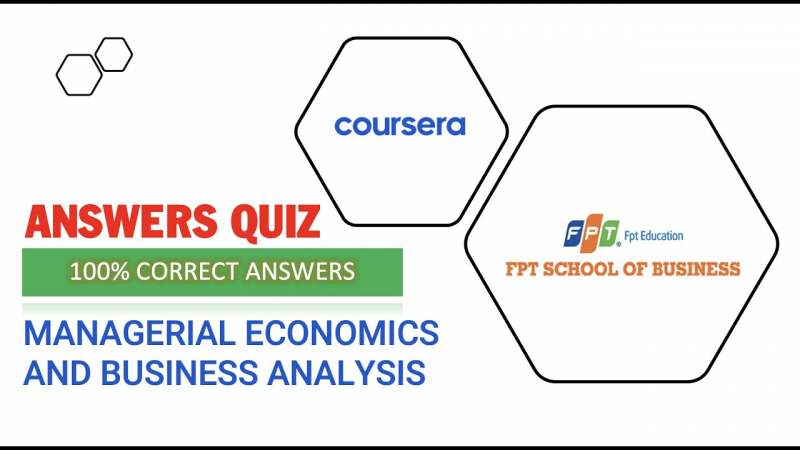
coursera.org -
To be a good manager, you must first grasp your company's market and economic climate. This encompasses global economic trends, factors at the country level, industry characteristics, and even firm-specific factors. This course has been designed to provide you the tools you need to create this comprehensive picture. The course is structured into sections that mostly address macro and microeconomics. Market equilibrium and efficiency, allocations, market structure, external shocks, how information influences markets, government interventions, consumer behavior, elasticity, and other topics are covered.
Topics covered at the macro level include the national and worldwide economic environments, issues and instruments, policies, globalization, government policies, institutions, and so on. There is simply a lot to cover here, and you can anticipate to cover almost everything relevant at some level. Using economics for commercial decision making and predictive statistics are two of the most interesting subjects. This is a novel concept that is not commonly encountered in basic Eco courses. There is also a capstone project to assist you finish your studies.
What you will gain:
- Analyze macroeconomic and microeconomic variables at the firm and country levels.
- Assess market characteristics and firm level behaviors as frameworks for making business decisions.
- Explore asymmetries and externalities as forms of market failure and as best practices for equilibrium outcomes within market structures.
- Create a business plan that requires the application of data analysis tools and interpretations of statistical findings.
Time to Complete: 120-140 hours
Format: Self-paced, fully onlineGoogle rating: 4.7/5.0
Enroll here: coursera.org/specializations/managerial-economics-business-analysis

illinoisstate.edu 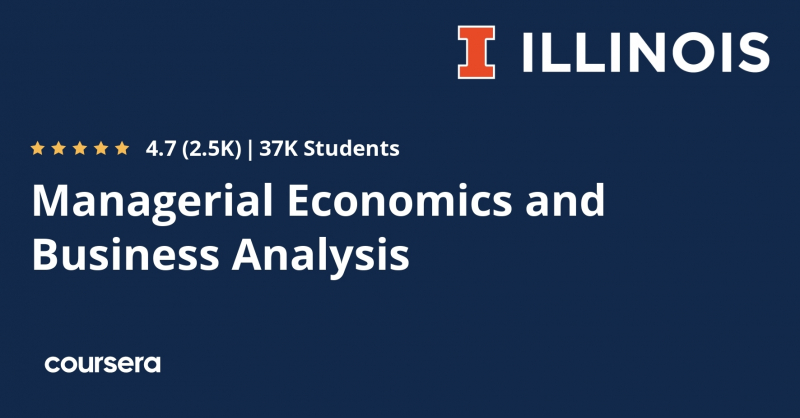
illinoisstate.edu -
This practical curriculum, developed in conjunction with the University of Cambridge, will assist you in understanding the growing commercial case for sustainable solutions. Overexploitation of natural resources essential for economic growth and development has had a severe influence on the environment as well as their availability and cost. As a result, it's simple to see why the concept of a circular economy, which offers new possibilities to develop a more sustainable economic growth model, is gaining traction around the world. This program will teach you how to manage and create a sustainable business by implementing circular economy principles into your operations.
The program includes six learning sessions that focus on distinct aspects of the circular economy, such as Introduction to Sustainability, Building a Sustainable Organization, Driving Innovation via Impactful Solutions, and others. Throughout the classes, you'll learn through high-quality video lectures, live webinars with Cambridge Judge experts, and practice assignments. After completing the program, you will be able to explain the characteristics of sustainable finance as well as learn how to measure the impact of investments.
What you will gain:
- Know about the distinctions of the interrelationship between the three dimensions of sustainability, which includes society, environment, and economy
- Understand how to demonstrate the value of impactful investments while implementing steps for developing a sustainable business model
- Learn the fundamentals of a circular economy while describing the business benefits of transitioning to a circular business model
- Understand how sustainability can drive innovation to your organization with the ReSOLVE framework included in the program
Time to Complete: 6 weeks, 4-6 hours/week
Format: Self-paced, fully online
Google rating: 4.6/5.0
Enroll here: online.em.jbs.cam.ac.uk/circular-economy-sustainability-strategies
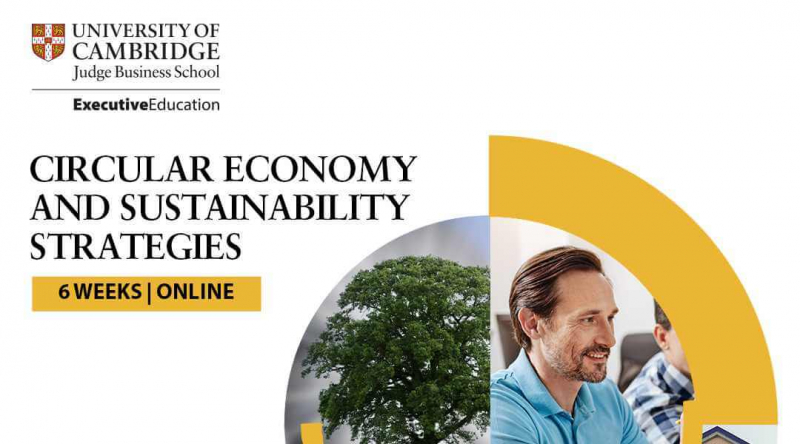
bragagni.uk 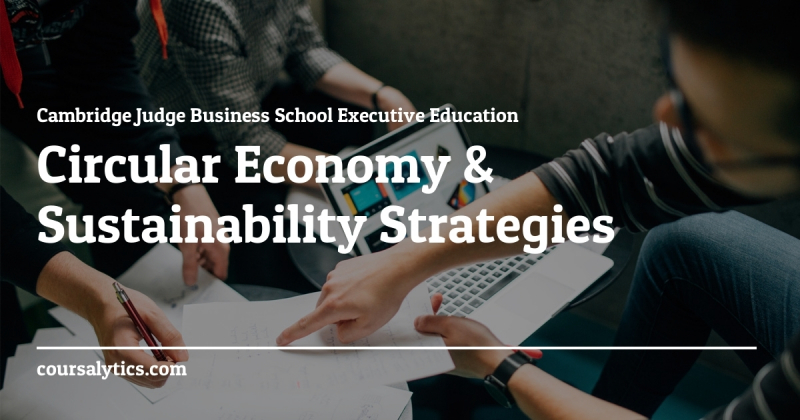
coursalytics.com -
This is the first online economics course taught from a pluralist perspective. Economic pluralism indicates that a diversity of theoretical and methodological ideas is valued in and of itself as the greatest approach for economics to develop in comprehending the world. This MOOC will demonstrate economic plurality in both substance and form. You will see not just him, an Economics Professor, but also a pop-up Prof from their business school, who depicts the actor perspective of corporations, government, and civil society. And you'll meet an online student from Greece who will guide you through training videos that explain fundamental concepts, tools, and approaches.
He will not, as practically every other course does, confine himself to the mainstream theory. Instead, he will expose you to four distinct economic theories for each of the major themes in microeconomics and macroeconomics. The theories are given in a variety of ways, ranging from wide and transdisciplinary to narrow and mathematical. He prefers to introduce you to four theories: social economics, institutional economics, post-Keynesian economics, and, at the end of each topic, Neoclassical economics, for the particular case of perfectly functioning markets. But not everything in this course is new. It includes numbers, graphs, tables, equations, and basic calculations, much like any other economics lesson.
What you will gain:
- Individuals, Households and Consumers
- Firms and Markets
- Real and Monetary Economy
- Growth and Trade
Time to Complete: 41 hours
Format: Self-paced, fully online
Google rating: 4.5/5.0
Enroll here: coursera.org/learn/intro-economic-theories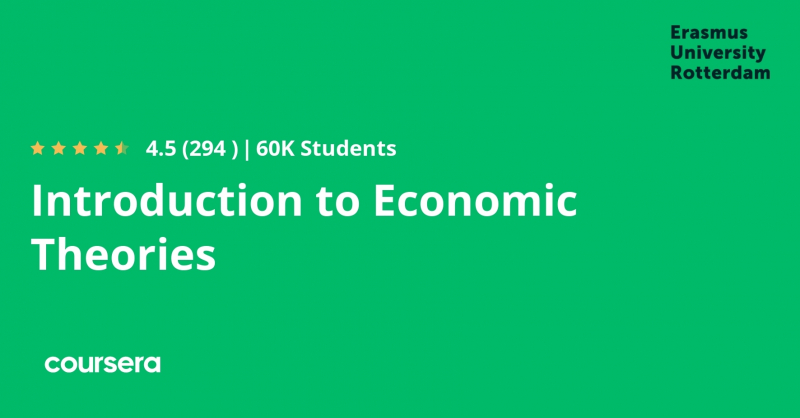
coursera.org 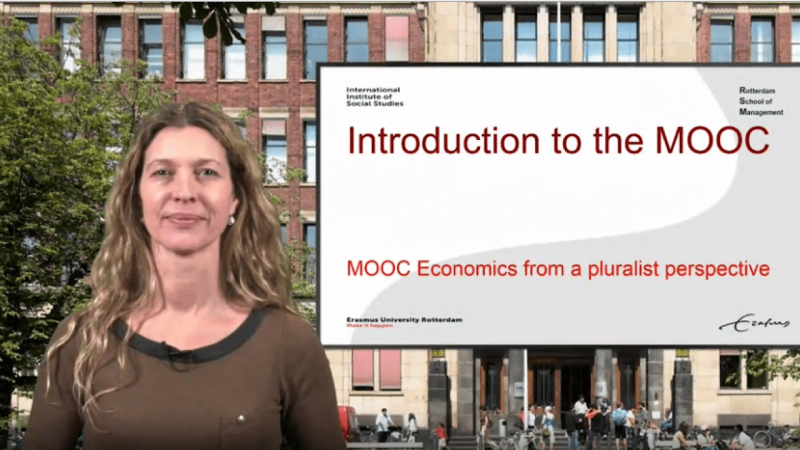
iss.nl -
Do you want to learn how to use data analysis tools to assess and solve business and economic problems? Then Erasmus University Rotterdam's Econometrics programme is for you, as you will study how to interpret data into models to produce projections and support decision making.
You can use econometrics to transform data into models to produce projections and support decision making in a wide range of sectors, from macroeconomics to finance and marketing. The course begins with introductory lectures on simple and multiple regression, and then moves on to issues of special interest like as model specification, endogenous variables, binary choice data, and time series data. These fundamental subjects in econometrics are learned by watching videos with in-video quizzes and completing post-video training exercises.
To obtain this course's certificate, you must complete six Test Exercises (one for each module) and a Case Project. Furthermore, you conduct peer-review activities on the work of three of your fellow MOOC participants. If you complete all seven assignments, you will receive the certificate. Their Econometric Institute's staff and PhD students will provide assistance each January and February. During other times, they merely offer basic advice. They constantly recommend that you connect with other course participants to discuss themes and tasks.
What you will gain:
- Linear Regression
- Time Series
- Econometrics
- Regression Analysis
Time to Complete: 66 hours
Format: Self-paced, fully online
Google rating: 4.6/5.0
Enroll here: coursera.org/learn/erasmus-econometrics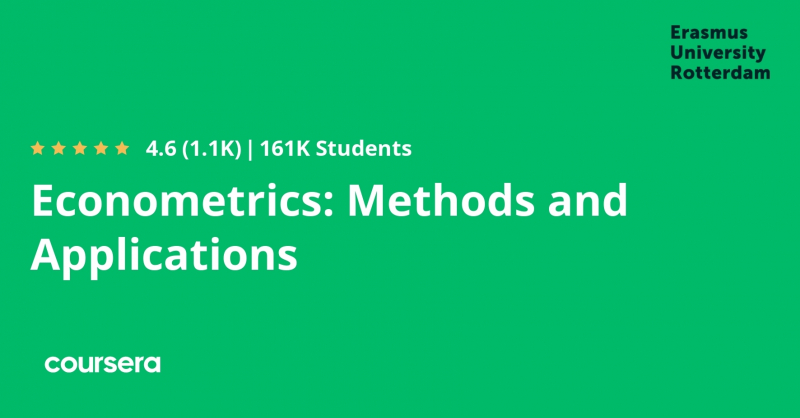
slideshare.net 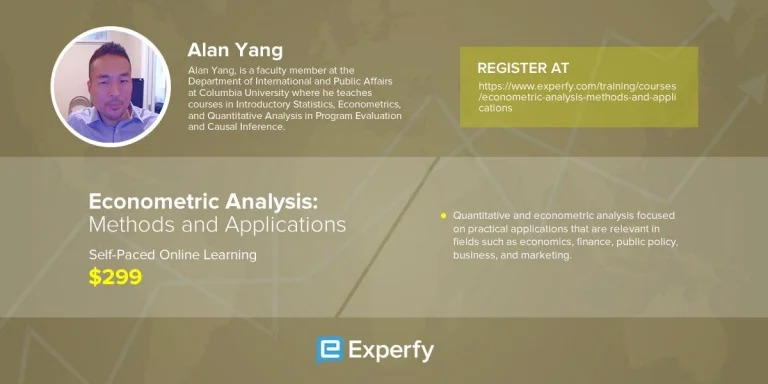
coursera.org -
This program is intended to expose students to Microeconomics and to provide them with the skills required for economic reasoning. This program focuses on the economic decision-making units (e.g. It investigates how economic decision-making units (such as customers, businesses, and government agencies) make decisions and how to make the greatest use of limited resources. This training will help you comprehend why life is the way it is and how to make the most of the limited resources at your disposal.
The three courses in the program are based on a post-graduate course in introductory microeconomics given on campus at The University of Queensland. The Professional Certificate program will teach you to think critically about all parts of your life in which you have options. This course is appropriate for anyone, whether you are a university student or a working professional looking to broaden your economic knowledge. Rather than mathematical theory, the emphasis is on actual economic principles.
What you will gain:
- Be able to describe microeconomic principles and concepts
- Have an appreciation for how micro economic data can be used
- Apply appropriate economic theory related to real-life contexts
- Critically investigate proposed outcomes using economic theory
- Ability to interpret and translate economic analysis findings using plain, non-technical language.
Time to Complete: 25-30 hours
Format: Self-paced, fully onlineGoogle rating: 4.5/5.0
Enroll here: edx.org/professional-certificate/uqx-microeconomics

artofsmart.com.au 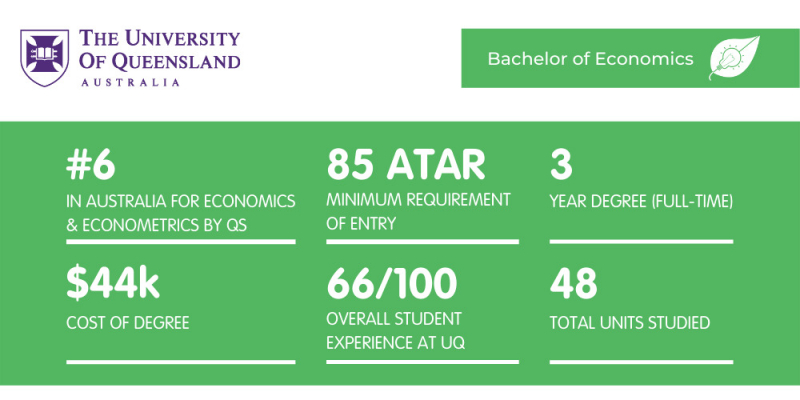
artofsmart.com.au -
Behavioral finance seeks to model the investor's psyche. It comes to counter the prevalent classical financial theory, which holds that investors behave systematically and rationally. Mental anchoring, loss aversion, ratio bias, confirmation bias, group impact. The importance of cognitive and emotional biases in investor decision-making has been illuminated by behavioral finance. A sunny Friday, for example, has a favorable impact on the market, whereas a rainy Monday is connected with a bear market: this is known as the weather effect.
There is also overconfidence, which leads investors to assume that they understand the market well enough to predict the most dramatic movements, which is not the case. So many irrational behaviors that explain excessive volatility, stock market crashes and other speculative bubbles on the financial markets. In this course, they examine these predictable errors, and discover where they are most susceptible to them. This course is intended to guide participants towards better financial choices. Learn how to improve your spending, saving, and investing decisions for the future.
What you will gain:
- Decision-Making
- Behavioral Finance
- Cognitive Bias
- Behavioral Economics
Time to Complete: 5 hours
Format: Self-paced, fully online
Google rating: 4.4/5.0
Enroll here: coursera.org/learn/duke-behavioral-finance
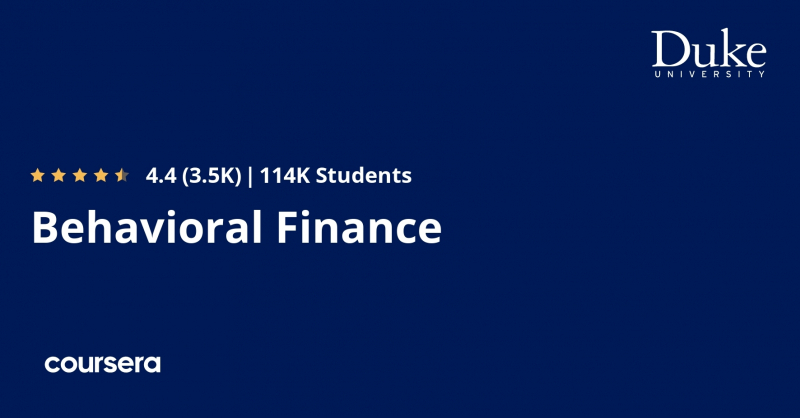
coursera.org -
Economics for Business is one of the best online economics courses. This is the ideal economics course for executives who want to improve the management of their business verticals or entire departments. It does not, like other courses, focus solely on economic theory, but instead delves deeply into case studies, narratives, and problem-solving activities to help you learn the critical business components of macroeconomics.
The course is divided into modules, each of which focuses on a fundamental topic such as the global economy, consumer confidence, the impact of economic policy, currencies, economic crises, economic shocks, and so on. There is also an emphasis on more novel notions such as cryptocurrency and developing social and political aspects. Businesses are particularly sensitive to overall economic health, so it is an essential topic here as well, with an emphasis on the current account, the labor market, and overall economic stability. MIT Solan is a terrific brand to have on your CV, so if you're looking for a mid-career boost, they think this is the place to be.What you will gain:
- Tools and frameworks to navigate the economic forces affecting your business.
- The ability to identify and evaluate macroeconomic variables, policies, and financial indicators, and account for these events in your decision making.
- A critical intuition for macroeconomic trends developed through problem-based learning and led by world-renowned economist Professor Roberto Rigobon.
Time to Complete: 8 weeks, about 7 hours per week
Format: Self-paced, fully onlineGoogle rating: n/a
Enroll here: getsmarter.com/products/mit-sloan-economics-for-business-online-program
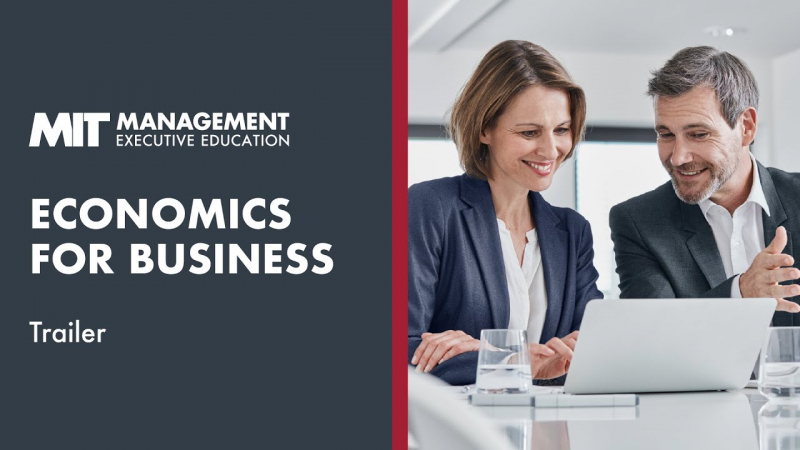
executive.mit.edu













